




When it comes to laundry, most people are familiar with the basic rules – separate colors from whites, use the right amount of detergent, and always check the pockets for any forgotten items. But what about poop? Is it safe to put poop in the washing machine? It may seem like an odd question, but for parents dealing with messy diapers or pet owners cleaning up after their furry friends, it’s a topic that can’t be ignored.
Experts are divided on the subject, with some saying that washing poop in the machine is perfectly safe, while others strongly advise against it. One argument in favor of washing poop is that modern washing machines are designed to handle a wide range of stains and messes, including bodily fluids. The combination of hot water, detergent, and agitation can effectively sanitize the clothing and remove any traces of bacteria.
However, there are also valid concerns about the potential health risks of washing poop in the machine. Some experts worry that the washing machine may not reach a high enough temperature to kill all the bacteria, especially if the poop is solid and not diluted with water. Other concerns include the risk of cross-contamination, as bacteria from the poop could potentially transfer to other items in the same load.
In conclusion, when it comes to putting poop in the washing machine, it’s best to err on the side of caution. If possible, it’s recommended to first remove any excess poop and rinse the clothing before putting it in the machine. Using hot water, an appropriate amount of detergent, and a sanitary wash cycle can help minimize the risk of contamination. Ultimately, it’s important to consider the specifics of the situation and consult with a healthcare professional or garment care expert for personalized advice.
Precautions for Washing Poop in the Machine
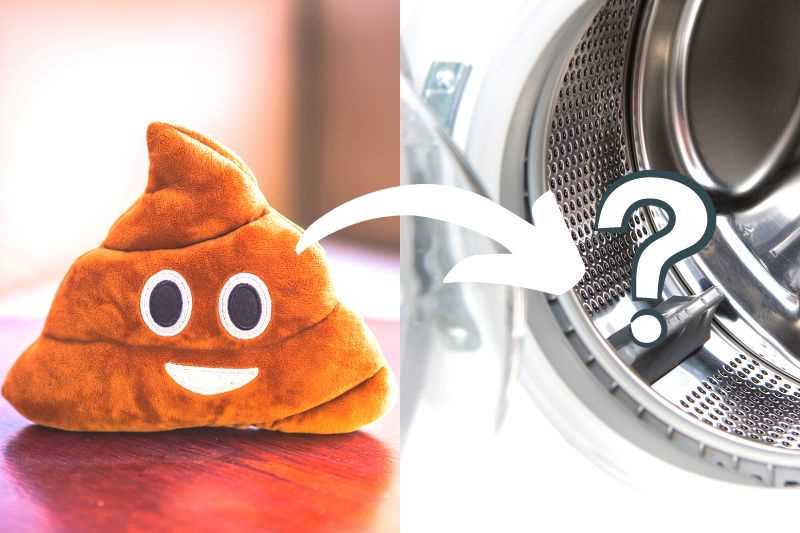
When it comes to washing poop in the machine, it is important to take certain precautions to ensure safety and cleanliness. Here are some expert recommendations:
1. Remove Excess Waste
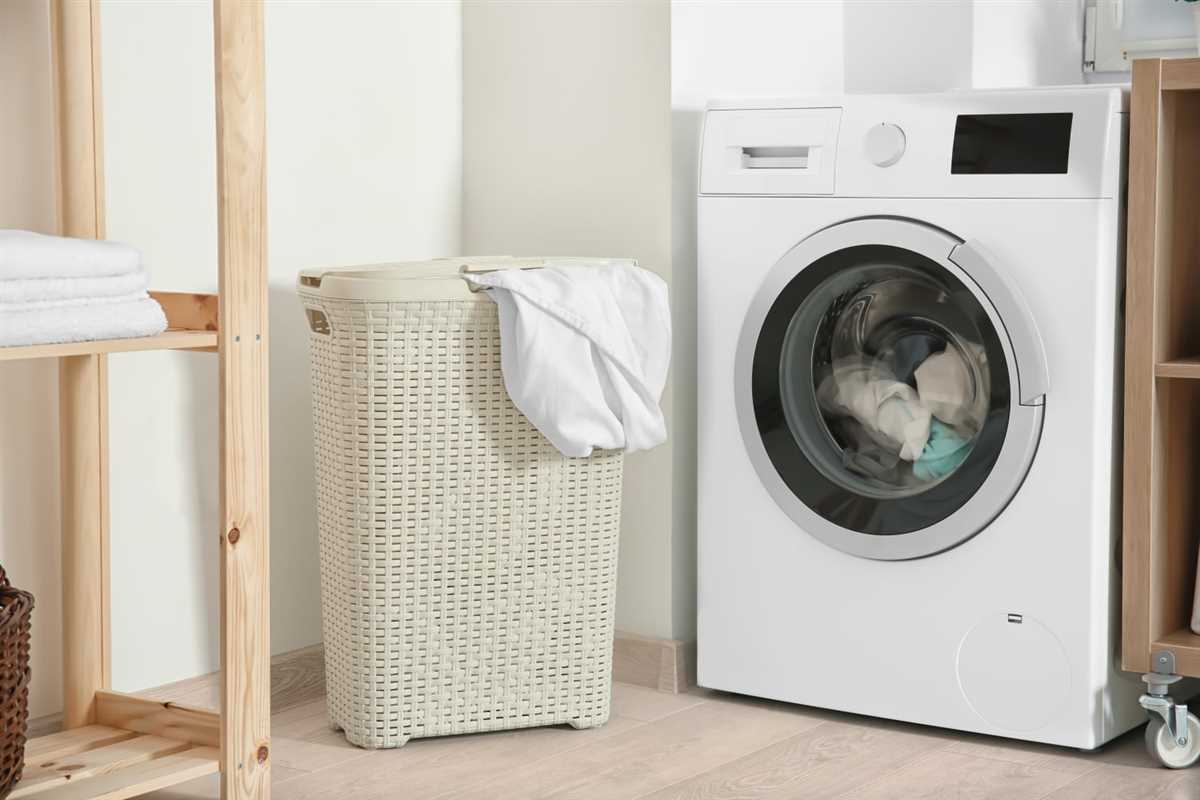
Before tossing the clothes in the washing machine, you should remove as much excess waste as possible. Use disposable gloves or a plastic bag to pick up any solid waste and discard it in the toilet. This step will help prevent clogging and minimize the risk of contamination.
2. Pre-Treat Stains
If there are any visible stains on the clothing, it is advisable to pre-treat them before washing. You can apply a stain remover or a mixture of detergent and water directly to the affected area. Allow it to sit for a few minutes to help break down the stain.
3. Use Hot Water and Detergent
Washing poop-contaminated clothes in hot water is crucial for killing any potentially harmful bacteria or viruses. Set the washing machine to the highest temperature setting recommended for the fabric type. Additionally, use an appropriate amount of detergent to ensure thorough cleaning.
4. Clean and Disinfect the Washing Machine
After washing poop-stained clothes, it is essential to clean and disinfect the washing machine. Run an empty cycle with hot water and detergent, or use a washing machine cleaner to remove any traces of bacteria. Wipe down the drum, door, and any other surfaces with a disinfectant to maintain hygiene.
5. Separate Contaminated Clothing
To prevent cross-contamination, it is best to separate the poop-contaminated clothing from other laundry items. Wash them separately, using the precautions mentioned above. This practice ensures that other garments remain clean and free from any potential pathogens.
6. Regularly Maintain and Clean the Washing Machine
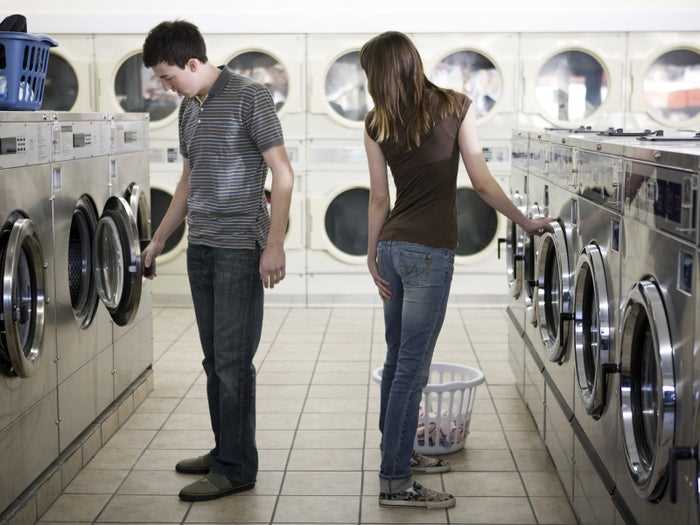
To ensure optimal functioning of the washing machine and prevent any lingering odours or bacterial buildup, it is important to perform regular maintenance. Clean the filter, remove lint, and periodically sanitize the machine according to the manufacturer’s instructions.
7. Dry Thoroughly
After washing poop-stained clothes, it is recommended to dry them thoroughly. Either air-dry them in direct sunlight or use the dryer on a high heat setting. This additional step helps to kill any remaining bacteria and ensures that the clothes are completely clean and safe to wear again.
8. Practice Personal Hygiene
Lastly, always practice good personal hygiene when handling poop-contaminated clothes. Wash your hands thoroughly with soap and water after removing gloves and disposing of waste. Avoid touching your face or mouth while handling dirty laundry to minimize the risk of infection.
By following these precautions, you can safely wash poop-contaminated clothes in the washing machine, ensuring cleanliness and hygiene for you and your family.
Potential Risks of Washing Poop in the Machine
While it may seem convenient to wash poop in the washing machine, there are several potential risks that should be taken into consideration:
- Spread of Bacteria: Washing poop in the machine can lead to the spread of harmful bacteria and pathogens. These microorganisms can contaminate other clothing items in the load, as well as the interior surfaces of the machine itself.
- Damaged Machine: The presence of solid waste in the washing machine can cause damage to its components. The spinning action of the machine can lead to clogging, blockages, or even breakage of the machine’s motor.
- Unpleasant Odours: Washing poop in the machine can result in lingering odours that are difficult to remove. The smell can permeate the machine, the clothes being washed, and even the surrounding area, creating an unpleasant environment.
- Breathable Particles: When poop is washed in the machine, fine particles can become aerosolized during the washing or rinsing cycles. These particles can be inhaled and may cause respiratory issues or exacerbate existing respiratory conditions.
- Chemical Reactions: Certain chemicals found in detergents or other laundry products can react with the components of fecal matter, leading to the release of harmful gases or fumes. This can pose a risk to the health and safety of the individuals using or coming in contact with the washed items.
Considering these potential risks, it is recommended to avoid washing poop in the machine. Instead, it is advisable to dispose of solid waste in the appropriate manner and use alternative methods for cleaning soiled items.
Expert Recommendations on Washing Poop in the Machine
Proper handling and disposal of poop is important for maintaining hygiene and preventing the spread of diseases. While using a washing machine to clean soiled clothing may seem like a convenient option, it is crucial to follow expert recommendations to ensure safety.
1. Pre-treatment of Soiled Clothing
Before placing any soiled clothing in the washing machine, it is recommended to pre-treat them. This involves removing any excess fecal matter, if possible, and rinsing the clothes under running water. This step helps to minimize the amount of poop that enters the washing machine.
2. Use Hot Water and Appropriate Detergent
When washing clothes contaminated with poop, it is advisable to use hot water and an appropriate detergent. Hot water helps to kill bacteria and viruses that may be present in the feces. Choose a detergent specifically designed for removing stains and killing germs.
3. Separate Contaminated Items
It is essential to separate contaminated items from other laundry to avoid cross-contamination. This can be done by placing soiled clothing in a dedicated laundry bag or container. Avoid washing them with other items, especially those used by infants or individuals with compromised immune systems.
4. Regular Cleaning and Maintenance of the Washing Machine
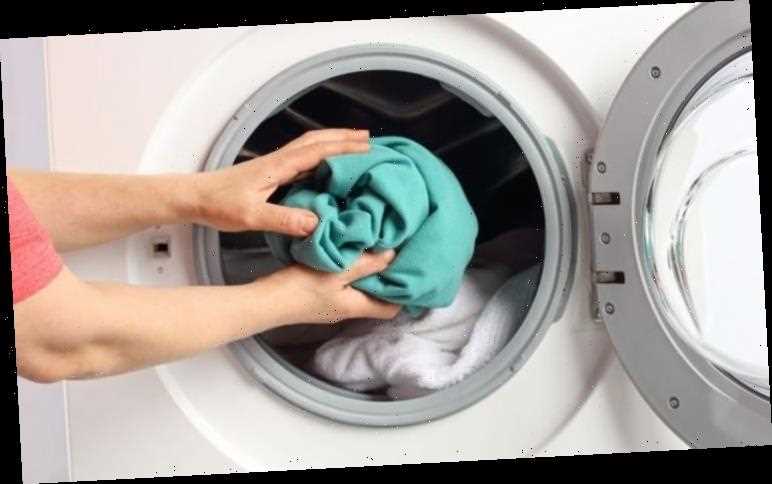
Cleaning and maintaining your washing machine is crucial when dealing with soiled clothing. Regularly clean the drum, detergent drawer, and rubber seal to prevent the buildup of bacteria and unpleasant odors. Follow the manufacturer’s instructions for cleaning and maintenance.
5. Practice Good Hand Hygiene
After handling soiled clothing or cleaning the washing machine, it is important to practice good hand hygiene. Thoroughly wash your hands with soap and water for at least 20 seconds. This helps to prevent the spread of any potential pathogens.
6. Consider Using Disposable Protection
If you frequently deal with soiled clothing contaminated with feces, you might consider using disposable gloves or other protective gear. This can help to reduce direct contact with poop and potential pathogens, minimizing the risk of contamination.
7. Seek Professional Cleaning Assistance
If you are unsure about washing soiled clothing in the machine or you are dealing with a particularly hazardous situation, it is advisable to seek professional cleaning assistance. They have the expertise and necessary equipment to safely and effectively handle such situations.
By following these expert recommendations, you can minimize the risk of contamination and ensure the safety of your washing machine. It is important to prioritize hygiene and take necessary precautions when dealing with soiled clothing contaminated with feces.
Steps to Safely Clean Poop in the Machine
To safely clean poop from your washing machine, follow these steps:
- Remove any solid waste: If there are any solid pieces of poop in the machine, remove them manually using gloves or a scoop.
- Pre-treat the stained area: Apply a stain remover or a mixture of laundry detergent and water directly to the stained area. Allow it to sit for a few minutes to help break down the poop stains.
- Start a pre-wash cycle: Set your washing machine to a pre-wash or soak cycle using cold water. This will help loosen and remove any remaining poop stains.
- Add laundry detergent: Once the pre-wash cycle is complete, add your regular laundry detergent to the washing machine and set it to a regular wash cycle. Use the appropriate water temperature and settings for the type of fabric you are washing.
- Check for any remaining stains: After the wash cycle is complete, inspect the items for any lingering poop stains. If you still see stains, repeat the pre-treat and wash cycle steps.
- Dry the items: Once the stains are fully removed, transfer the cleaned items to the dryer or hang them up to air dry. Make sure they are completely dry before storing or using them.
It is important to note that these steps may vary depending on your specific washing machine and the type of fabric you are washing. Always check the manufacturer’s instructions and garment care labels for any specific recommendations.
Remember to always sanitize your washing machine after cleaning up poop to prevent the spread of bacteria. Run an empty cycle with hot water and an appropriate cleaning agent to kill any remaining germs and odors.
Alternative Methods for Dealing with Poop Stains
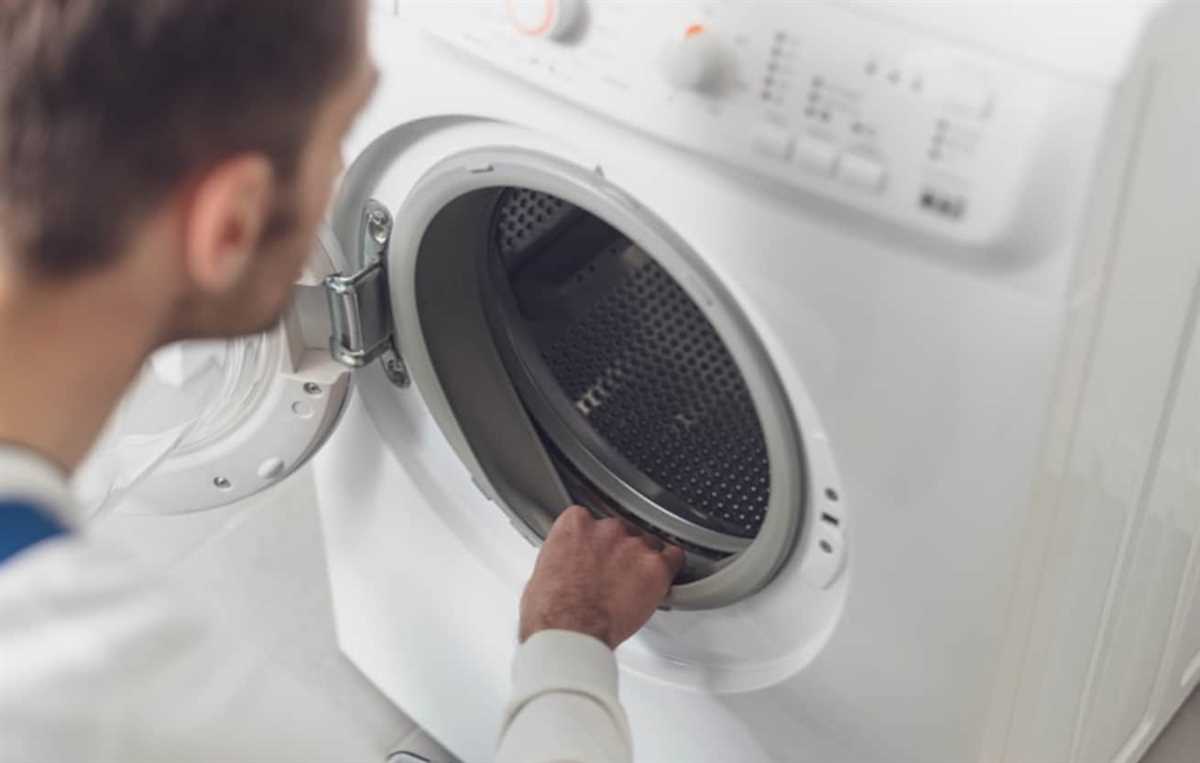
1. Remove Excess Waste
The first step in dealing with poop stains is to remove any excess waste from the clothing or surface. Use a paper towel or disposable gloves to carefully scrape off as much poop as possible.
2. Pre-Treat the Stain
Before washing the stained item, it’s important to pre-treat the stain to increase the chances of successful stain removal. There are several methods you can try:
- Stain Remover Spray: Apply a stain remover spray directly to the stain and rub it in gently with a soft cloth or sponge.
- White Vinegar: Mix equal parts of white vinegar and water, and then pour the mixture onto the stain. Let it sit for a few minutes before gently scrubbing the stain with a soft brush or cloth.
- Baking Soda: Make a paste by mixing baking soda with a small amount of water. Apply the paste to the stain and let it sit for about 15 minutes. Then, rinse it off with cold water.
3. Wash the Item
Once you have pre-treated the stain, it’s time to wash the item. Follow the instructions on the clothing label regarding water temperature and wash cycle. You can also add a laundry detergent that is specifically designed to remove tough stains.
4. Check the Stain Before Drying
After the wash cycle is complete, check the stain to see if it has been completely removed. If the stain is still visible, repeat the pre-treatment and wash steps until the stain is no longer noticeable. It’s important not to put the item in the dryer until the stain is completely gone, as the heat from the dryer can set the stain.
5. Sun-Dry the Item (Optional)
If the stain has been successfully removed, but there is still a lingering odor, you can sun-dry the item. Hang it outside in direct sunlight, as the sun’s UV rays can help eliminate any remaining odors. However, be cautious as direct sunlight can also cause fading on colored fabrics.
6. Professional Cleaning (For Delicate Items)
If the stained item is delicate or valuable, it may be best to take it to a professional cleaner. They have the expertise and specialized cleaning techniques to effectively remove stains without damaging the fabric.
7. Use Disposable Liners or Pads
To help prevent future poop stains, consider using disposable liners or pads. These can be placed on surfaces such as changing tables or car seats to catch any accidents, making cleanup easier and reducing the risk of stains.
FAQ
Is it safe to put poop in the washing machine?
According to experts, it is not recommended to put poop in the washing machine. It can contaminate other clothing items and pose a health risk.
What are the dangers of putting poop in the washing machine?
Putting poop in the washing machine can spread harmful bacteria and viruses, leading to potential infections. It can also damage the washing machine and cause foul odors.
Can I use bleach to clean poop stains in the washing machine?
No, bleach alone is not sufficient to clean poop stains in the washing machine. It is recommended to first remove any solid waste manually, and then use an enzymatic cleaner specifically designed for removing biological stains.
What should I do if poop accidentally gets into the washing machine?
If poop accidentally gets into the washing machine, it is important to handle it with caution. Remove any visible waste manually, then run a hot water cycle with detergent to clean and disinfect the machine. It is also advisable to sanitize any clothing items that came into contact with the poop.
Are there any alternative ways to clean poop stains without using the washing machine?
Yes, if you prefer not to use the washing machine, you can soak the stained clothing items in a mixture of warm water and hydrogen peroxide or vinegar. After soaking for a sufficient amount of time, scrub the stains gently and then rinse thoroughly.














